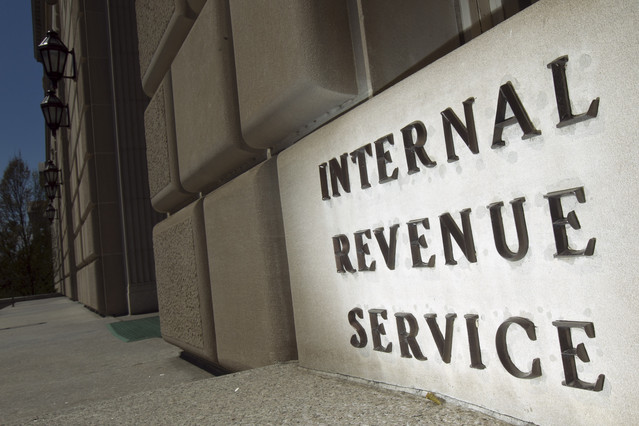Taxes
Following Tax Court Defeat, IRS is Still After Syndicated Conservation Easements
Proposed regs issued today identify certain syndicated conservation easement transactions as “listed.”
Dec. 06, 2022

Proposed regulations issued today by the IRS identify certain syndicated conservation easement transactions as “listed transactions,” a move that followed a recent U.S. Tax Court ruling against the tax agency.
The IRS defines listed transactions as “a transaction that is the same as or substantially similar to one of the types of transactions that the IRS has determined to be a tax avoidance transaction and identified by notice, regulation, or other form of published guidance as a listed transaction.”
Back in June, ProPublica reported on syndicated conservation easements in an article entitled “The Tax Scam That Won’t Die.” The article states:

Thanks for reading CPA Practice Advisor!
Subscribe for free to get personalized daily content, newsletters, continuing education, podcasts, whitepapers and more...
Already registered? Login
Need more information? Read the FAQ's
The government is targeting a tax deduction that goes by the cumbersome name “syndicated conservation easement,” which exploits a charitable tax break that Congress established to encourage preservation of open land. Under standard conservation easements, landowners who give up development rights for their acreage, usually by donating those rights to a nonprofit land trust, get a charitable deduction in return. When conservation easements are used as intended, both the public and the owner of the property benefit. A piece of pristine land is preserved, sometimes as a park that the public can use, and the donor gets a tax break.
The syndicated versions are different. Instead of seeking to protect a bucolic reserve for wildlife or humans, profit-seeking intermediaries have turned the likes of abandoned golf courses or remote scrubland into high-return investment vehicles. These promoters snatch up vacant land that till then was worth little. Then they hire an appraiser willing to declare that it has huge, previously unrecognized development value — perhaps for luxury vacation homes or a solar farm — and thus is really worth many times its purchase price. The promoters sell stakes in the donation to individuals, who claim charitable deductions that are four or five times their investment. The promoters reap millions in fees.
In 2017, the IRS attempted to kill this tax avoidance scheme when it issued Notice 2017-10, which classified syndicated conservation easements as listed transactions and thus must be reported to the IRS. Classifying these transactions as “listed” was meant to discourage taxpayers from participating in these schemes, identify those taxpayers who do, and penalize accordingly.
According to Forbes, penalties include:
- By adding Section 6662A to the Internal Revenue Code in 2004, Congress imposed an additional penalty—on top of the myriad other civil and potentially criminal penalties applicable to United States taxpayers whose tax returns are incorrect—on taxpayers who participate in “listed” or “reportable” transactions and whose returns understate tax as a result of that reportable transaction. The penalty is either 20% or 30% of the amount of the understatement of tax attributable to the listed transaction.
- Section 6700 of the Internal Revenue Code provides for promoter penalties to be assessed at a percentage of the transaction.
- Sections 6707 and 6707A penalize the failure to file certain reports or keep track of certain information required to be kept in connection with a listed transaction.
- Accuracy penalties and civil fraud penalties are more likely to be imposed in connection with a listed transaction.
As Forbes noted, these are just the civil penalties; there are potential criminal consequences, as well.
But the IRS was dealt a blow on Nov. 9 when the Tax Court called IRS Notice 2017-10 “invalid.” Forbes reported on Nov. 10:
In Green Valley, the taxpayer argued that the IRS failed to follow the Administrative Procedure Act (APA)’s requirements when it published Notice 2017-10, because it failed to follow formal rulemaking procedures the APA required. In particular, the IRS did not issue a notice of formal rulemaking, ask the public to submit comments, and then publish final guidance that addresses the comments from the public.
IRS argued that it was not required to go through formal notice and comment, but the Tax Court disagreed.
Relying heavily on recent Supreme Court of the United States case CIC Services, LLC v. Internal Revenue Service and Sixth Circuit Case Mann Construction, Inc. v. United States, 27 F. 4th 1138 (2022), the Tax Court held that “the act of identifying a listed transaction by the IRS, by its very nature, is the creation of a substantive (i.e., legislative) rule and not merely an interpretative rule.” Accordingly, Notice and Comment rulemaking was required and the IRS’s failure to follow that procedure renders the notice invalid.
The IRS said on Dec. 6 that it disagrees with the Tax Court decision and continues to defend Notice 2017-10; however, the proposed regulations issued on Tuesday will “eliminate any confusion regarding the need to report these transactions and to ensure that this decision does not disrupt the IRS’s ongoing efforts to combat abusive tax shelters throughout the nation.”
The IRS said it hopes to finalize the proposed regulations, after considering public comments, in 2023 and intends to issue proposed regulations identifying additional listed transactions in the near future.
